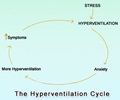Experts at the Children's Hospital Informatics Program (CHIP) say that an individual's lifetime risk of stroke can now be predicted with the aid of a new statistical model.
Experts at the Children's Hospital Informatics Program (CHIP) say that an individual's lifetime risk of stroke can now be predicted with the aid of a new statistical model.
During a study, they used genetic information from 569 hospital patients, and showed that their predictive model could estimate an individual's overall risk of cardioembolic stroke - the most common form of stroke - with 86 percent accuracy."For complex diseases like stroke, it's not just a single mutation that will kill you. More likely it is an interaction of many factors," explains CHIP researcher Dr. Marco Ramoni, an Associate Professor at Harvard Medical School and senior author of the study reported in the journal Stroke.
Working in collaboration with Dr. Karen Furie, the director of the stroke unit at Massachusetts General Hospital (MGH), and Rachel Ramoni, of the Harvard School of Dental Medicine, Ramoni identified 569 patients that had presented to MGH's emergency department and outpatient neurology clinics between 2002 and 2005 with symptoms of suspected stroke.
The researchers gathered information from the 146 patients with confirmed cardioembolic stroke, and 423 controls who were followed and found not to have stroke.
The team looked for 1,313 genetic variants, called single nucleotide polymorphisms or SNPs, known to correlate with stroke.
The SNPs that each patient had were then entered into the model, known as a Bayesian network, which not only helped the researchers identify the genetic variants that correlated with stroke, but also enabled them to determine how such factors interplayed and what was the strength of such interactions.
Advertisement
According to the researcher, the model was able to predict an individual's risk of cardioembolic stroke with an accuracy of 86 percent.
Advertisement
"The next step is to get more SNPs. These analyses looked at only 1,313 out of 3.3 million known SNPs. Even a million SNPs would cover the vast majority of the genome. We would get much better predictions," the researcher adds.
Ramoni also says that by identifying all the genetic variants that modulate the risk of stroke, it could provide insight into its mechanisms and provide targets for future drugs.
He is currently refining the model and believes that this technology could be used to predict inherited risk of many other conditions.
Source-ANI
LIN















